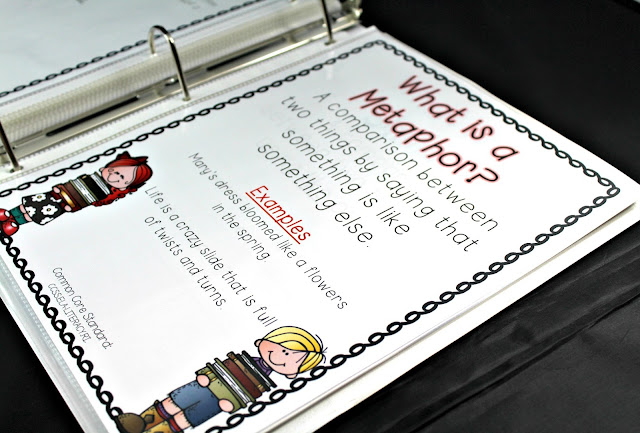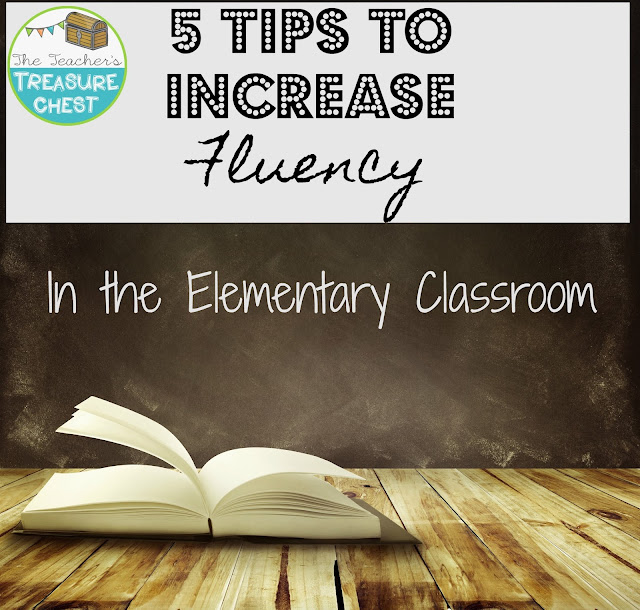This is one of those posts that I hope that it can be something we try to look at the positive side of things. I'm with you, I am not a fan of standardized testing. I understand why we have it, but how do we approach the culture of it? It's a necessary component to our jobs, to have a system to evaluate student's growth and the effectiveness. If what it does that, that's another Oprah show. Ha! But for real, we can't change it, so why let it consume you? I want to discuss how to prepare your students for standardized testing without teaching the test. There is a difference.
Use Standards Based Instruction
Back in the day, when someone would ask "What are you teaching?" I'd often respond with something like "Character traits". That was indeed the skill I was teaching, however, I didn't always spend a lot of time reflecting on how the standard was assessed or addressed in other places than the way our curriculum presented it. This was a crucial mistake on my part, because I didn't exactly understand what my students were being asked to do. I thought "I've adequately taught this skill, so they are good". And most of them were. But how do we guarantee all students are able to correctly master the standard? By teaching the specific standard using the correct academic vocabulary. I want to be sure that each question I ask is purposeful while using the correct academic terms. For example, while teaching character traits, I want to be sure my questioning sounds something like "how did you interpret the character's actions?". Question stems are one easy way to incorporate the language of the common core standards into the questions you ask your students at your small group table. Through my guided reading groups, I'm able to take each standard and apply it to the level of text that each group needs.
Sometimes it's difficult because the standards have a very high level of vocabulary, so we have to scaffold our instruction to work up to the level of vocabulary the students are ready for.
Use Spiral Review Weekly
Sometimes our pacing guides do not allow for much spiral review. We are pretty pressed for time just to get ALL the standards covered, let alone time to go back and reteach something. One way to combat this is to use a spiral review center in your literacy rotations daily. I like to start this week three or so of my rotations, so that I can go back two or three skills, not necessarily the one I JUST taught. This allows students to continuously practice the skills throughout the year, not for just two weeks or so at a time. Plus, it helps with your preparation. If I've used a task card or center in small groups while teaching a skill, three to four weeks later, that activity can be in my skill based center for students to practice independently.
Use Standards Based Assessment
I'm not sure how your district or school requires you to assess your students, but we have the ability to chose the assessments our grade levels want to use. This can be challenging. How do you pick an assessment that is standards based and on the appropriate reading level? Some say it helps to pick assessments that are above grade level expectations to prepare them for the testing season. Here's my opinion on that: We are teaching elementary students who will have to be assessed on above grade level content at the end of the year. However, I do not see the benefit to selecting a text above grade level for the entire year. That will not close achievement gaps. Students should be instructed on their instructional level and tested on grade level (not above) expectations. So by using a standards based, grade level assessment, you are essentially providing SOME students with above level assessments. How far do we want to go? If you use something higher than grade level, the students who are below grade level will not be able to master it or experience so much difficulty they will become frustrated. Let's expose students to above grade level text, I absolutely believe they need that exposure. However, do that with your instructional materials, not your assessments. Students are going to eventually become so frustrated that they can't master something, thus killing their confidence.
Reduce Students Stress
Students feel the stress we feel as educators. If we look at the test like just another assessment, the students will too. A few years ago, my happy go lucky son, woke up the morning of his standardized test. He is such a little ray of sunshine! He's always super happy and loves school. He was crying nonstop and I couldn't get him to stop. He kept saying "Mom, mom, if I fail this test, I'm going to fail third grade." Wait- WHAT? That is our state requirement, but he's an honor roll student. Why was he told this? I get students need to take it seriously, but we don't have to use scare tactics to get them to focus. I say things like "This is just a test to show us how smart you are!". By reducing our stress (I know this is hard) we will reduce the stress of our students.
Use the End of the Day
The last fifteen minutes of the day can be very helpful. I like to use a variety of ways to practice the skills I've taught. Quizizz is a great interactive tool to use to review. During this time, I try to pick a skill I taught several weeks ago. Unless my students are struggling with the current skill of course. I also like to use a variety of task cards. One of my favorites for the upper grades are from Jamie Sears from Not So Wimpy Teacher. These task cards are amazing! I also use the end of the day to pull another intervention group. Through my intervention binders, I'm able to hit additional reading skills that my students struggle with.
Read Aloud to Students Daily
I know you probably get sick of hearing me say this, but it's so powerful. When we read to our students with purpose, they gain so much. We can read text that is above their level (like their standardized test will be....haha) and work through how to understand the difficult text TOGETHER. Through read alouds, you can model for students how readers think and respond to the text. Read alouds help students because they can hear fluent reading AND see how the reader THINKS while reading!

























